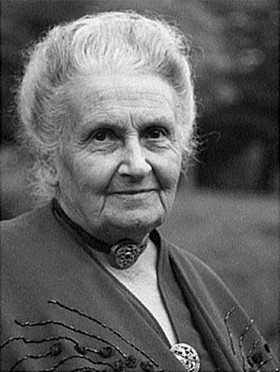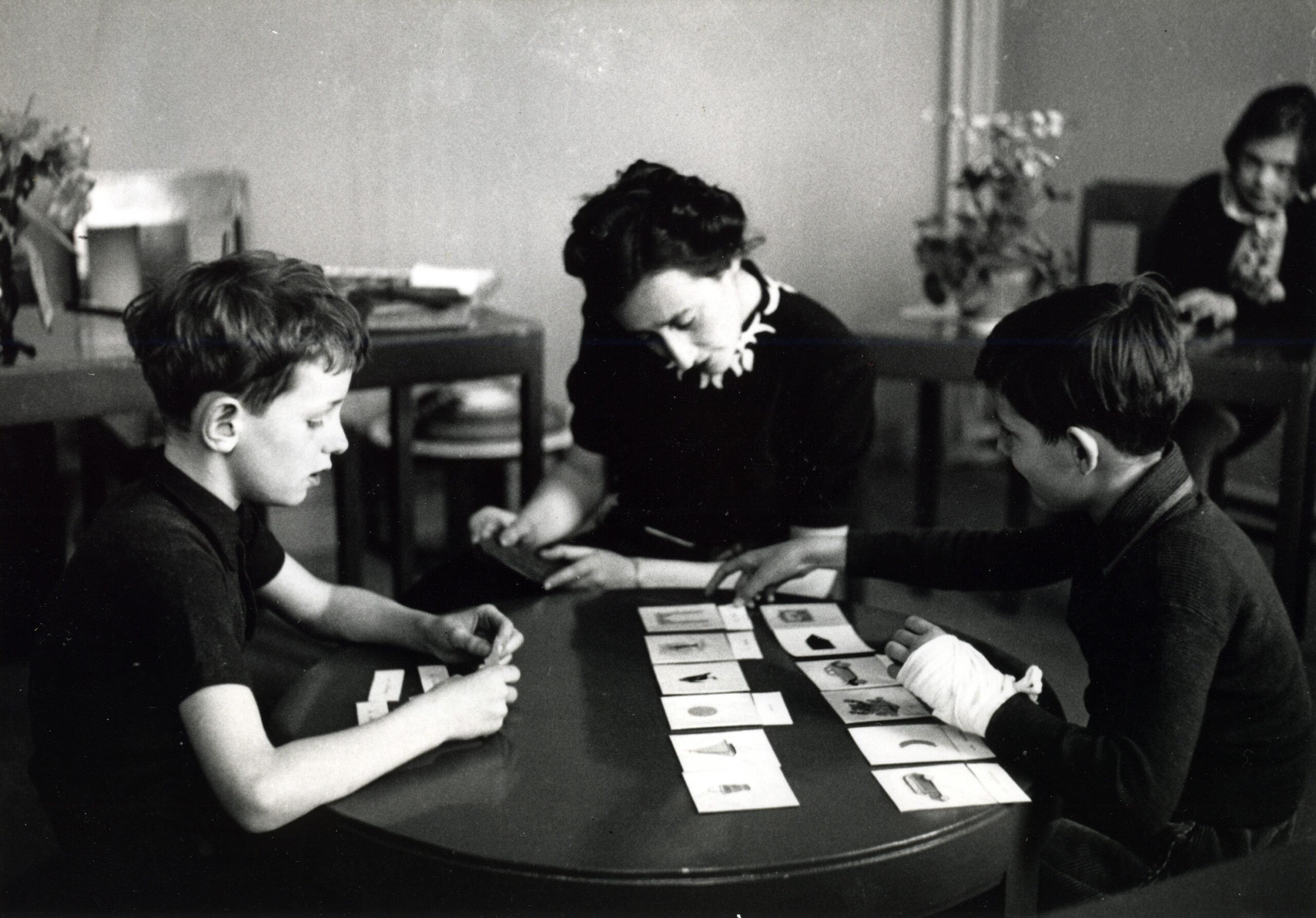
Maria Montessori
Maria Montessori was born on August 31, 1870 in Chiaravalle (Ancona) and was raised in Rome. he attended the University of Rome where she studied in the department of Medicine and Surgery and graduated in 1896 with a thesis in psychiatry as the first female doctor in Italy.
Montessori became interested in the work of English and French scientists, such as Itard and Séguin, on the integration of children with special needs into the community using specialized educational methods.
She also committed herself to women’s emancipation and participated in the Feminist Conference in Berlin in 1896 and again in London in 1899.
Her career
Montessori’s early career focused on children with disabilities through her research at the S.Maria della Pietà psychiatric hospital in Rome in the early 1900s. She treated and studied children with behavioural and emotional difficulties and disorders, and in any case in a state of serious emotional abandonment. She realized that the teaching methods used with these children were ineffective. After years of study and experimentation in the field, Montessori developed a new method for working with children with disabilities. In her early work Montessori discovered that children follow a unique developmental sequence and that it is therefore necessary to differentiate teaching methods and learning programs based on realistic understanding of a child’s potential at any given developmental phase.
Maria Montessori created a new teaching method, which was completely different from educational methods used in her time. Instead of using traditional methods that focused on reading and learning by heart, children were taught through the use of objects and experience. Remembering information, rather than a process of memorization, become a sensory experience. By using their senses-touching and manipulating objects–students committed to memory information and ideas.
Montessori material and theoretical developments
After some time, it became clear that this new innovative method enabled disabled children, in tests supervised by external experts, to obtain higher scores than normal children. Maria Montessori concluded that children without disabilities would also benefit from her educational method. She argued that education for all children must begin with sensory experiences. Education through the senses, according to her, provides necessary preparation and foundation for cognitive development and learning. Montessori materials enable children to use their senses to explore as well as monitor their work independently, without ongoing instructions from the teachers.
These ideas and practices led in 1907 to the establishments of the first Children’s House in the San Lorenzo neighbourhood of Rome and in the following year, a second one opened on Via Solari in Milan with the help of Società Umanitaria.
In 1909 Maria Montessori published The Montessori Method. The book was quickly translated into numerous languages and generated a worldwide interest in the Montessori method. In the United States, the Montessori method gained early acceptance. On her first visit to the US, in 1913, the New York Tribune named Montessori “the most interesting woman in Europe.” Throughout the decades, Montessori education remained popular in the US, where it received further recognition through the work of Nancy McCormick Rambusch in the early 1960s.
In 1924 Maria Montessori founded the non-profit organization “Opera Nazionale Montessori” in Rome, and in 1929 she established the “Associazione Montessori Internazionale” (A.M.I.)

In the 1930s, Maria Montessori refused to give in to the fascist propaganda. Her opposition to fascism forced her to leave the country in 1934. Not surprisingly, the Nazi regime was hostile to her ideas and her works were publicly burned in Berlin and Vienna in the 1930s. During the period of fascism and the second world war, Montessori lived in various parts of Europe and for a while also in India.
After the war, she returned to Italy and dedicated herself to the reorganization of the Opera Nazionale Montessori. he died on May 6, 1952 in Noordwijk, Holland.
Her work lives on in the thousands of schools and institutes that bear her name all over the world.

